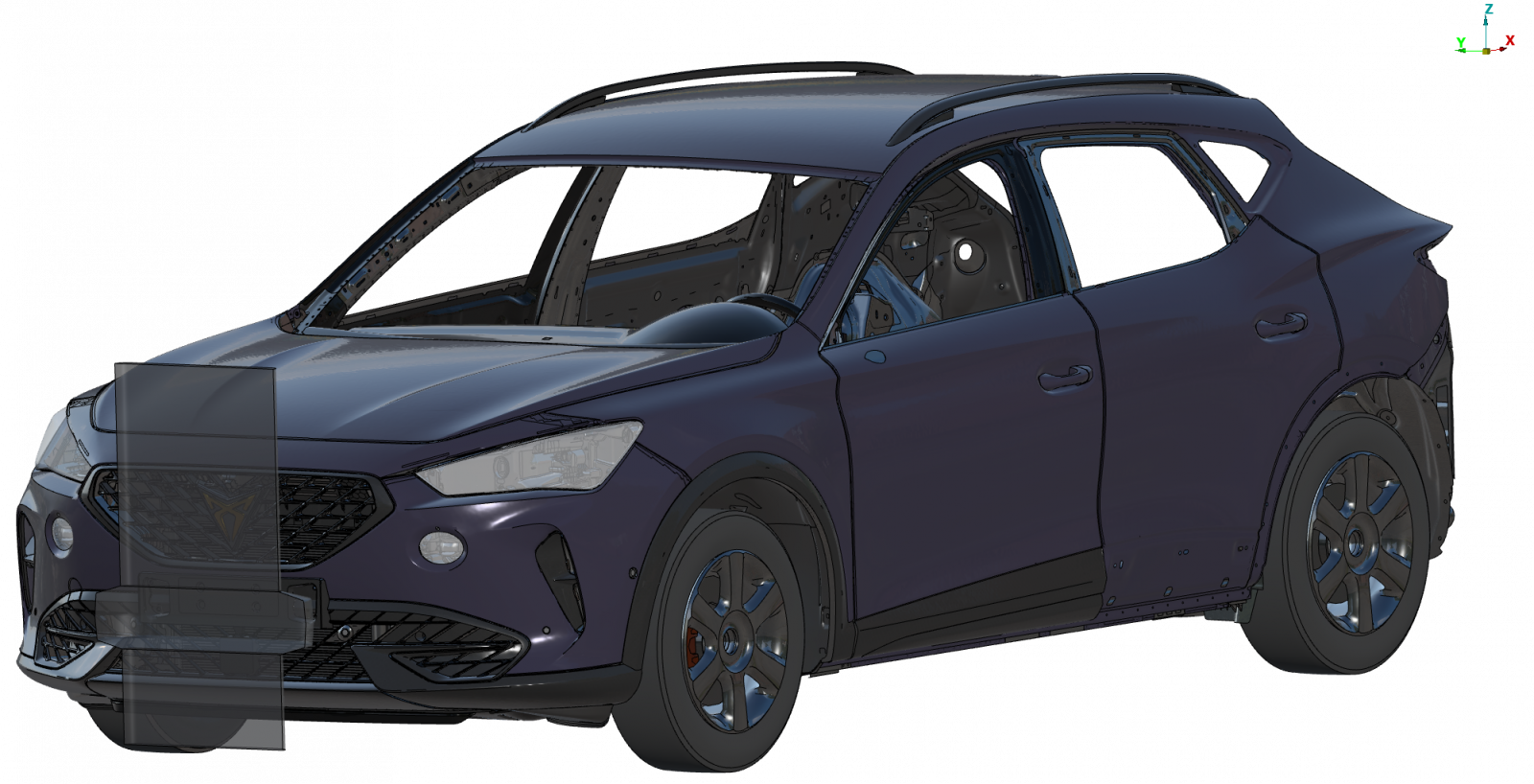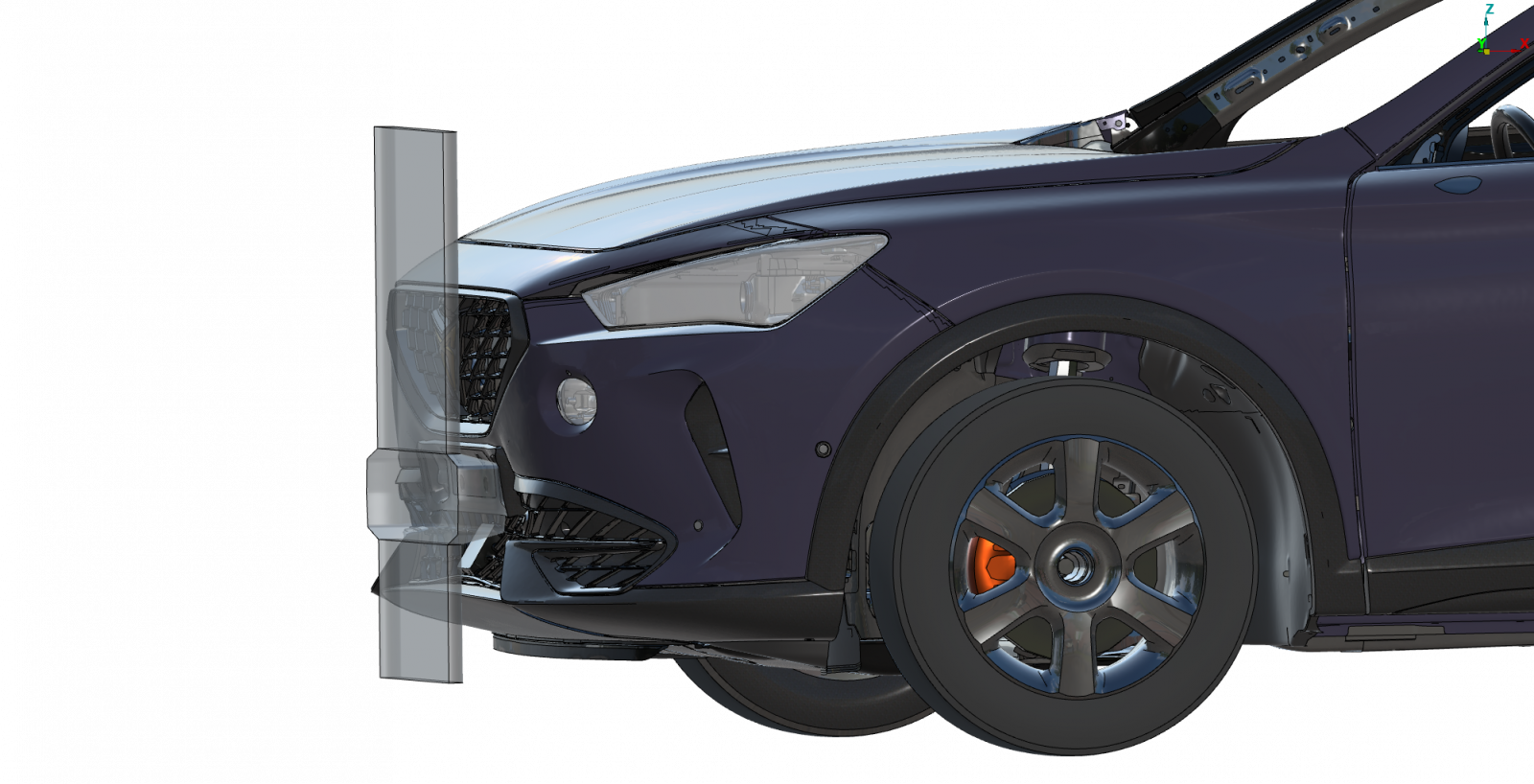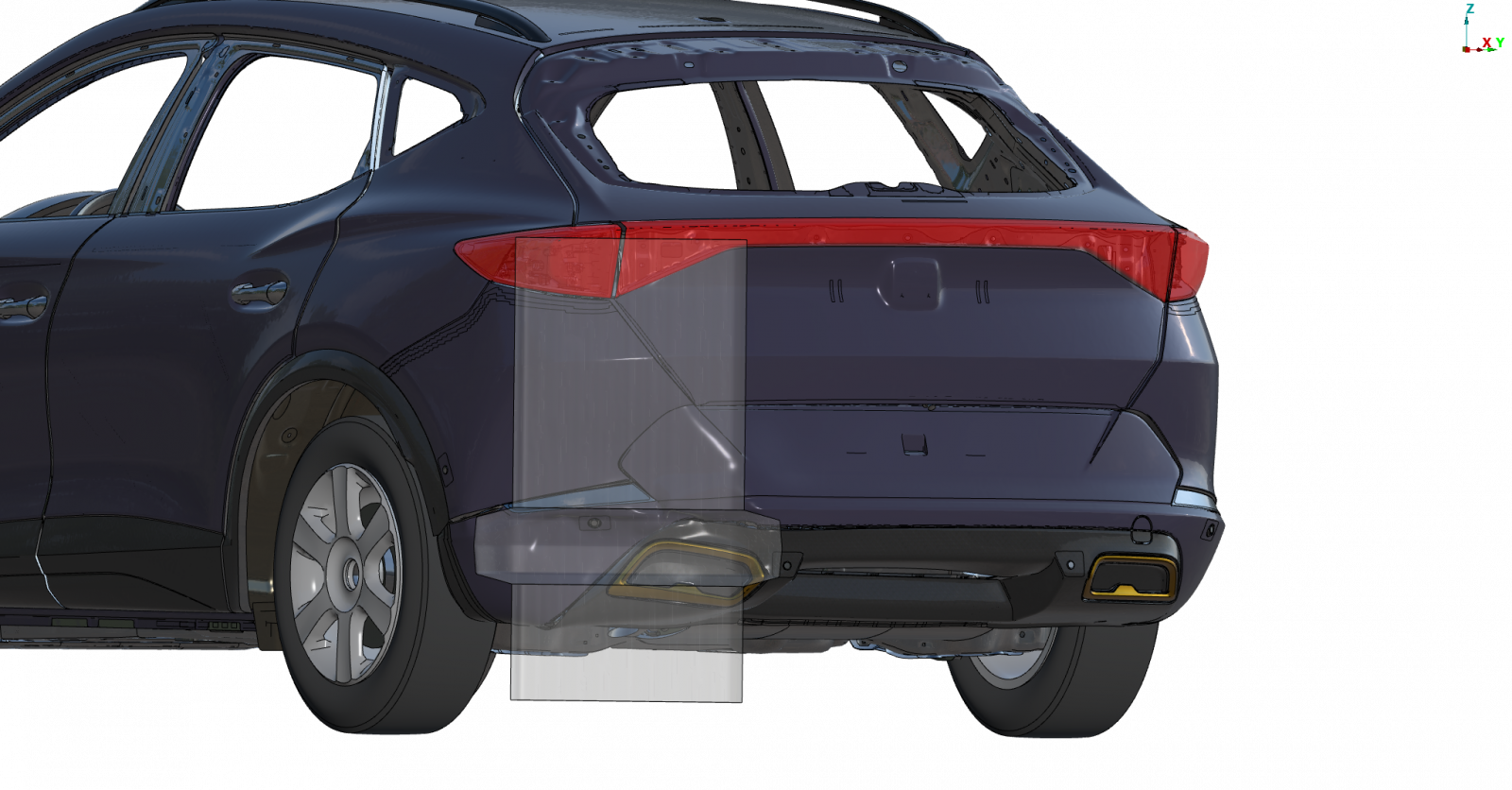Low speed impacts
Timeline
2013-2023Sector
AutomotiveScope
CAE development of the car body in low speed impacts (RCAR)BACKGROUND
Against low speed vehicle impacts (less than 20km/h), the main objective of manufacturers consists of developing systems that facilitate and lower the costs of repairs. Consumer associations rate these designs using a reparability index, which is directly related to the price of insuring the vehicle and may affect the success of the sale in certain countries or companies interested in purchasing a fleet of vehicles.
Using energy absorption systems or Crash Management Systems (CMS), the structural components of vehicles can be protected against damaged in low speed impacts and this way, avoid costly repairs or inoperability of the car as a result of non-repairable damage.
RESULTS
SOLUTE works to optimally develop a vehicle that is capable of withstanding low speed impacts as best as possible, to minimise any damage and associated costs.
EXPERIENCE
Since 2013, SOLUTE has been deeply involved in this area, requiring an in-depth R&D&I development, for leading car manufacturers.
Throughout their history, CMS assemblies have been developed with proposals linked to the design of each part, depending on the type of vehicle to be developed (electric, compact, SUV...).
These models are subjected to different types of tests, which replicate the real tests that are carried out in a laboratory and which attempt to represent different situation drivers might face on a daily basis.
METHODOLOGY
Based on some initial 3D designs facilitated by the design department, engineers from SOLUTE collaborate with the customer's calculations department to transform them into dynamic calculation models using the most popular codes on the market (PamCrash, ABAQUS, and ANSYS).
These models are subjected to different types of tests, which replicate the real tests that are carried out in a laboratory and which attempt to represent different situation drivers might face on a daily basis.
Such tests include impacts at 20 km/h, equivalent to a crash while in a traffic jam, or 2-5 km/h, replicating crashes that occur while parking. In the first case the aim is to prevent damage to functional parts as well as to expensive aesthetic parts and damage to the main structure. In the second, the aim is to not damage any part and reduce aesthetic impacts.
Once the scenarios of the study have been established, SOLUTE carries out continuous loop optimisations of the different energy absorption systems, proposing solutions that achieve the set objectives as well as any additional restrictions provided by the manufacturer due to the costs involved.
The result is valuations of the different proposals agreed with the design, manufacturing and calculation departments and a calculation with a comprehensive analysis of the affected components. SOLUTE presents these proposals in detailed reports showing the structural behaviour of each part, with visual content generated using advanced post-processing and analysis tools.
Also, during collaborations with the customer, SOLUTE contributes their experience in tool generation and in shortening the times required for analysing variants and producing reports with programming scripts that automate repetitive tasks.
Lastly, the SOLUTE team gets involved in the correlation phase; once the laboratory tests are completed, our engineers review the modelling of the systems and verify the reliability of these through a visual and analytical comparison of sensor signals.
Nuclear
Design and optimisation of structural components in nuclear power plants
Capability that guarantees the integrity of the reactor as well as safety in terms of radiation leaks in spaces that are restricted and protected against natural disasters such as earthquakes or hurricanes.
Wind
Energy and weather forecast for renewable operators
Weather and energy forecast service through the training of artificial intelligence algorithms.


